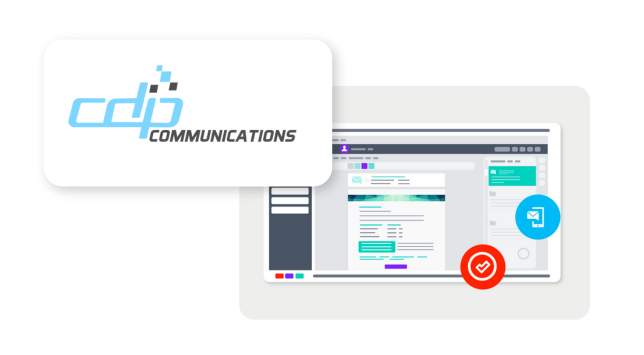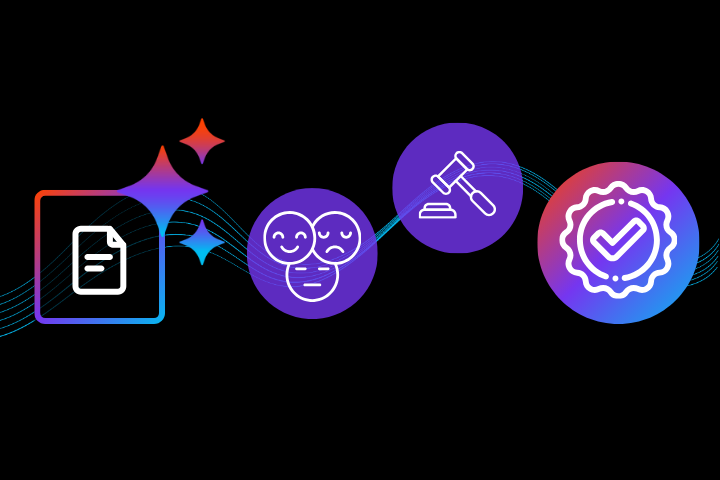
If you’ve heard about digital accessibility but haven’t taken any action, it’s a good time to re-evaluate. It’s no longer a question of whether to make your customer communications accessible, it’s when. The European Accessibility Act (EAA) came into effect in June 2025 and the Section 508 language in the USA is being strengthened from “You should do this” to “You must do this”.
Updating the thousands of PDFs that are on your company’s website or in an archive to make them accessible can seem like an overwhelming task. But the good news is, with the right tools, it doesn’t have to be a heavy lift.
What exactly is digital accessibility?
Universal digital accessibility is the practice of ensuring that digital communications are accessible to everyone, regardless of their abilities or disabilities. For example, some non- or partially-sighted readers may rely on a screen reader, require large print, or need high-contrast colours to consume and understand the information in their documents.
The many government regulations and country-specific accessibility acts requiring compliance, and the overwhelming global support for inclusivity have made it more important than ever to ensure that all individuals can access and use digital documents.
With approximately 16% of the global population having some sort of disability or impairment, it is easy to see why this would be important—it’s an opportunity to be inclusive and represents a growth opportunity. Not providing accessible documents is also a big risk—in 2024, plaintiffs filed over 4000 digital accessibilities lawsuits in the US alone! Plus, many companies have 1000s of non-accessible PDFs on websites and being distributed via email. With each of those PDFs representing a potential lawsuit, there’s a big risk.
Why should your company make communications accessible now?
Because many countries have introduced document accessibility laws that result in fines and penalties for non-compliance, providing equitable access to information is now a top priority for many organisations. Some of the most well-known laws and regulations are now being more strictly enforced, resulting in fines and in some cases jail time (the CIO is often the one held responsible for compliance).
The European Accessibility Act (EAA) applies to companies that have customers in Europe. It's designed to ensure there are common rules for accessibility across all EU countries. We are hearing it will be strictly enforced, and non-compliance is not an option.
Making customer communications accessible isn’t just a legal requirement, it is also the right thing to do. By prioritising accessibility, you open your doors to a wider audience and foster inclusivity. There are laws for physical accessibility—think about a ramp at the entrance to a building—so it only makes sense to have laws for digital accessibility too.
Following are a few reasons to make your customer communications accessible to everyone:
- Improve Customer Experience: Communications that are digitally accessible are better customer communications. Delivering information in an accessible way also means you won’t alienate any part of your existing or potential customer base.
- Lead your Industry: When a company is committed to accessibility, it shows that they value all individuals and are committed to inclusivity. This can enhance brand reputation and attract customers who value diversity and inclusion.
- Strengthen Control: All public-facing documents must be accessible and since you cannot control where communications go after they are sent out (for example, PDFs – or Portable Document Format are by nature “portable”), everything must be accessible when it leaves your control.
- Boost Search Engine Optimization (SEO): Accessible content results in better SEO — website content is more “findable” when your content is accessible, and search engines ingest accessible formats better, improving your SEO.
- Do the Right Thing: Not only will you be doing the right thing by providing digitally accessible customer communications, but you'll be also abiding by the law and avoiding lawsuits, penalties, and fines.
Understanding compliance for digital accessibility
There are two main standards for governing digital accessibility: one for PDFs and one for digital communications.
PDF/UA
PDF/UA is a specification that defines how to make a PDF document readable by assistive technologies like a screen reader. A tagged PDF, or compliant PDF is usually referred to as "PDF/UA" (Portable Document Format/Universal Accessibility) and it means the document is designed to be accessible for people with visual, hearing, and mobility impairments.
WCAG
Web Content Accessibility Guidelines (WCAG) were developed for digital content like emails and websites. WCAG dictate that web content must be capable of interacting with a variety of assistive technologies. Developed by the World Wide Web Consortium (W3C), they are widely accepted as the go-to standard for digital accessibility compliance.
How can you get started with digital accessibility for your customer communications?
Designing your customer communications with accessibility in mind should be a best practice, and you should have the right tools in place to make that a reality. Most customer communications software, including Quadient’s Inspire portfolio, can help ensure that your customer communications are digitally accessible and comply with global and regional regulations.
But what about all of those archived documents that customers ask for on demand? What about all of those PDFs you’ve already sent out, have posted on the company website, or stored in your company’s archive? Post-composition remediation involves making existing documents accessible. With the right remediation software, you can take just about any historical document from a partner, company archive, or another external source and make it accessible.
Quadient offers a remediation tool called Inspire Adapt. It converts PDFs to PDFU/A documents in both high-volume batch and on demand scenarios.
With post-composition software, combined with Customer Communications Management (CCM) software, documents can be made accessible in real time and promptly presented on a device for seamless interaction with assistive technology.
The bottom line is this: universal document accessibility is critical for ensuring that digital documents are accessible to everyone, regardless of their abilities or disabilities. It ensures equal access to information, meets legal and regulatory requirements, improves user experience, increases productivity and efficiency, enhances brand reputation, and meets the needs of customer segment.





